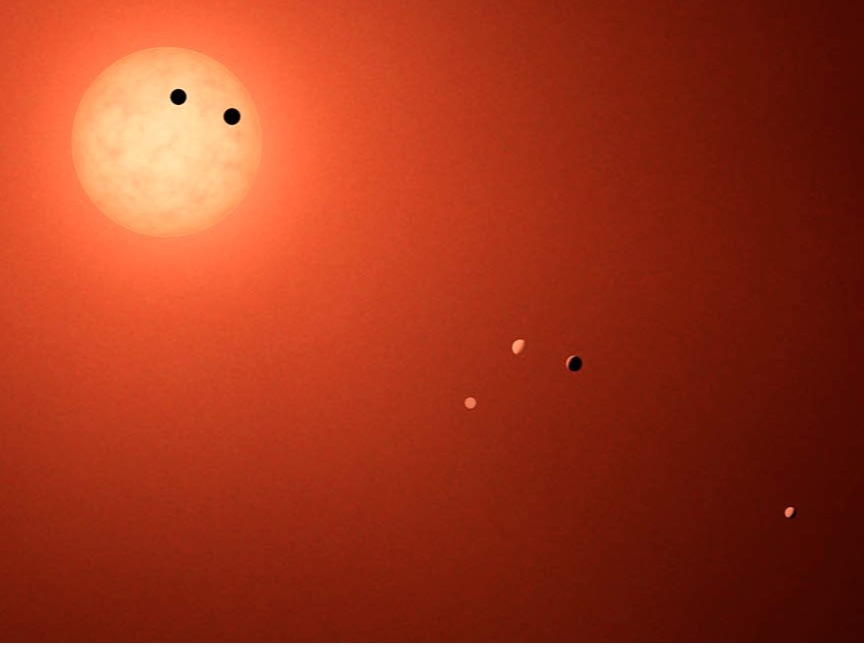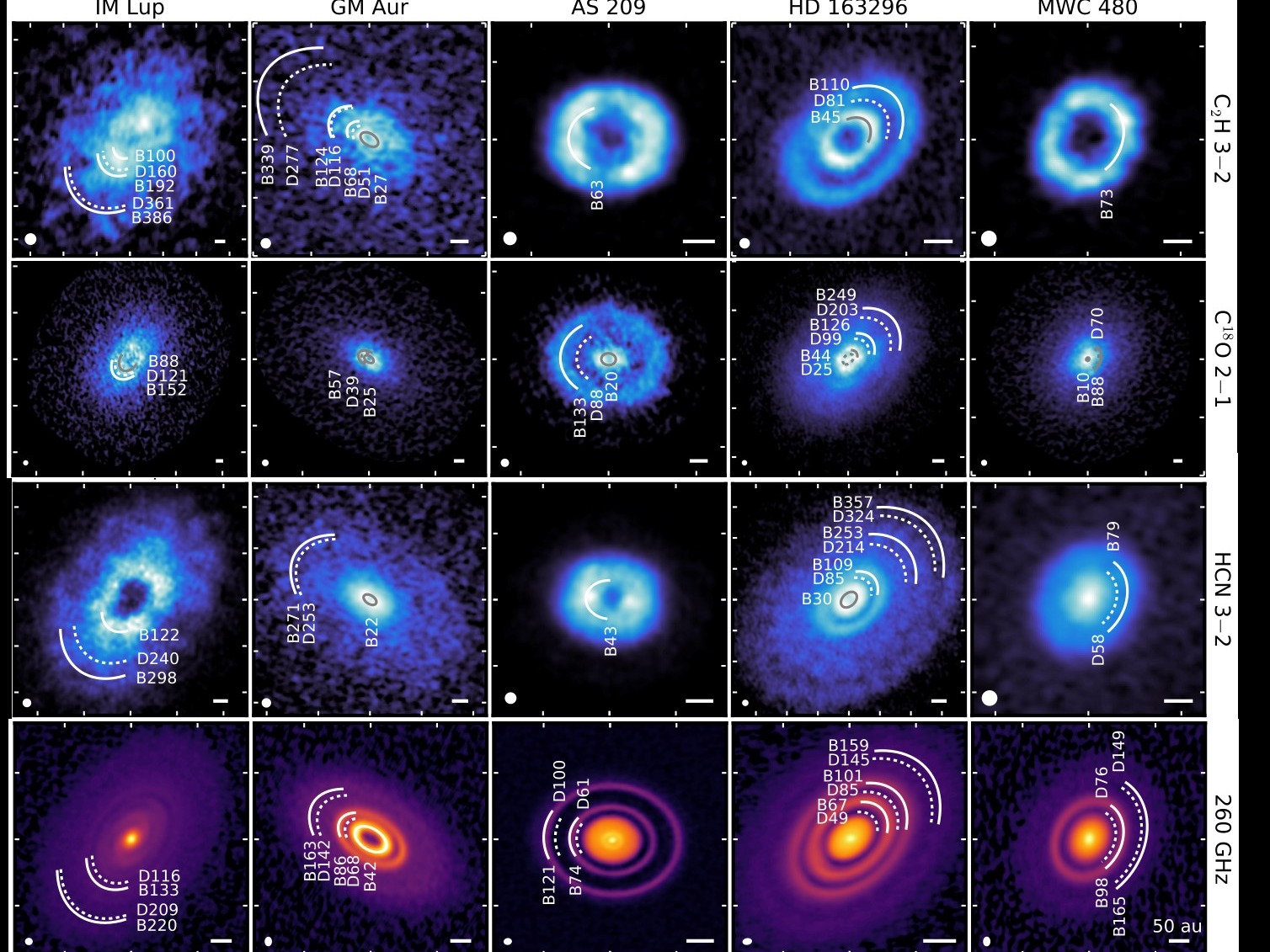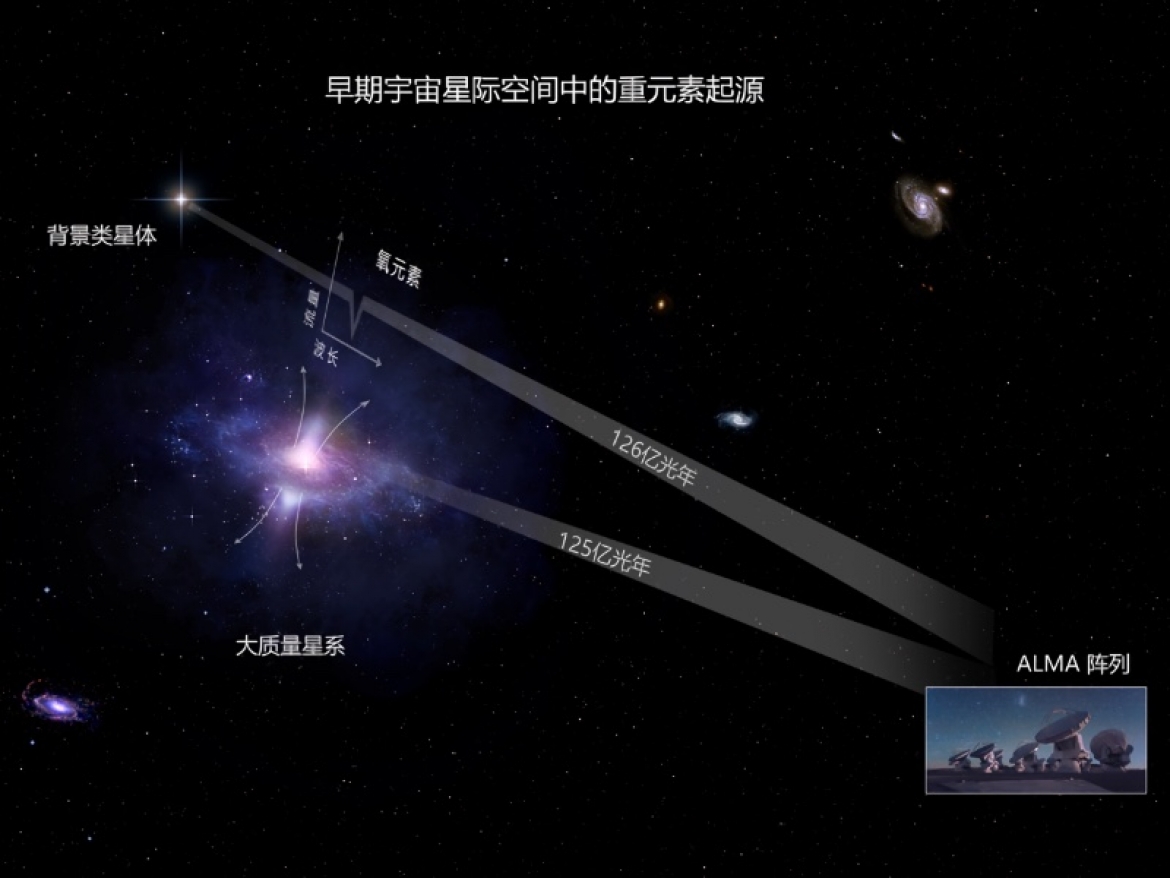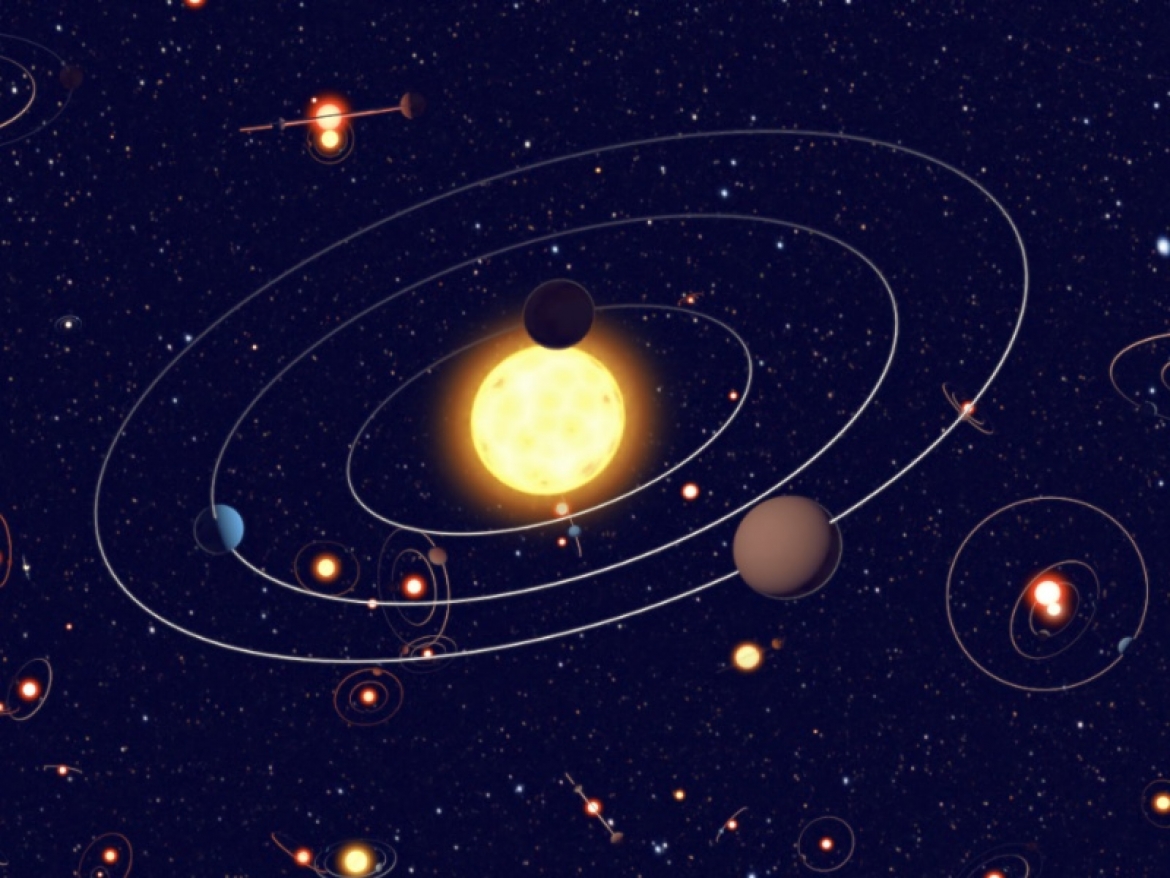
-

2022.02.22
A new model for the dynamics of TRAPPIST-1's seven Earth-like planets
The red dwarf star TRAPPIST-1 is home to the largest number (which is seven) of Earth-sized planets ever found in a single planet system. Three of these planets may be suitable to harbor liquid water or even life and will be prime targets for the recently-launched JWST spacecraft. Different from the terrestrial planets in our solar system, scientists have determined that it is likely that the T...
More -

2022.01.14
Are substructures in different components of protoplanetary disks correlated?
Image credit: Law et al. 2021, MAPS IIIIt is commonly believed that planets form in disks surrounding young stars, but how exactly this happens remains an outstanding question. In recent years, astronomers have made great strides in directly observing protoplanetary disks using the Atacama Large Millimeter/submillimeter Array (ALMA), located in the Atacama Desert of Northern Chile. By observing...
More -

2022.01.10
PolarLight Reveals the Corona Geometry in Sco X-1
On 2022 January 1, Hua Feng and his collaborators reported in The Astrophysical Journal Letters a significant detection of X-ray polarization in Sco X-1 with the space mission PolarLight, which has been operating on-orbit for more than three years since its launch in 2018 October. The results help place stringent constraints on the geometry of the hot corona, and mark Sco X-1 as the second astr...
More -

2021.09.27
Massive Galaxies May be Crucial for the Enrichment of Cosmic Metal in the Early Universe
Massive Galaxies May be Crucial for the Enrichment of Cosmic Metal in the Early Universe 27 Sep 2021 What are the sources of early metals and how did they enrich t...
More -

2021.09.09
DoA faculty reviews the statistical distribution of exoplanets
DoA faculty reviews the statistical distribution of exoplanets 09 Sep 2021 How do planetary systems form and evolve? It is a scientific question that astronomers h...
More



